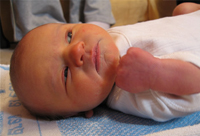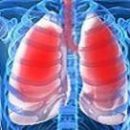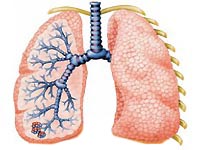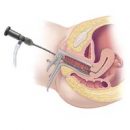Acute bronchiolitis - inflammation Bronchiol is a disease that arises mainly in young children on the background of ARVI. It leads to a disruption of respiration and in the absence of treatment it may endure. Read more about acute bronchipalities in children read in the article.
Content
 Acute bronchiolitis is one of the most severe diseases of the respiratory organs in young children. The most common cause of acute bronchiolite is a viral infection. In 60-85% of cases, this disease causes a respiratory-sycitial virus (PC virus), less often paragripping virus (more often than 3 types), cytomegalovirus, adenovirus, mycoplasma, chlamydia. Cases of bronchipoly after measles, wind sieves, cough.
Acute bronchiolitis is one of the most severe diseases of the respiratory organs in young children. The most common cause of acute bronchiolite is a viral infection. In 60-85% of cases, this disease causes a respiratory-sycitial virus (PC virus), less often paragripping virus (more often than 3 types), cytomegalovirus, adenovirus, mycoplasma, chlamydia. Cases of bronchipoly after measles, wind sieves, cough.
Among the environmental factors that can serve as predispose to the development of bronchipolitis are of particular importance to passive smoking in the family. Under the influence of tobacco smoke, the process of cleansing the mucous membrane of the bronchi is disturbed due to the work of the ciliation, slows down the promotion of mucus. Passive smoking contributes to the destruction of bronchial mucosa cells. Children of the 1st Year of Life are especially wounded in this regard.
The mechanism of development of bronchiolitis
The earliest defeat with bronchipolite - the lunch of the cells of the mucous membrane of small bronchi and bronchiol and the replacement of its cili cells. Solded cells, mucus form dense traffic jams inside the bronchi and bronchiol, leading to partial or full of breathing tracks, because of which the child becomes difficult to breathe. Gradually cells are restored, and everything comes to normal.
Manifestations of bronchiolitis
In most cases, the appearance of the bronchip clinic is preceded by ARVI with the lesion of the nasopharynx and the upper respiratory tract. In some cases, suddenly, in others - gradually (on the 2-4th days of the disease) the state worsens. The child becomes sluggish, he declines the appetite, appears at the beginning of an obsessive, dry, pretty quickly turning into a wet cough, the shortness of breath with difficulty breathing, inflating the wings of the nose, the tension of the neck muscles.
One of the characteristic signs of this disease is the skin of the skin due to disorders of the supply of oxygen tissues. Sometimes children become gray or even cast-iron. Often, children are heard wet wilds at the height of inhale. Periods of short-term stopping of breathing may appear, especially in premature. Pronounced shortness of breath leads to dehydration. Body temperature may be low or even normal. The severity of the child's condition is determined by the degree of respiratory impairment.
Diagnosis and treatment of bronchipolitis
For the diagnosis of bronchipolitis, a survey of mucus from the nasal strokes and from the language is carried out, blood and urine tests are made. Well help in diagnosis Rengenic study of the chest, computed tomography, as well as tests for assessing the quality of breathing.
Treatment of acute bronchipolitis includes a number of activities aimed at combating disadvantage of oxygen. The mandatory method of therapy is to inhalation of oxygen (hydrochyotherapy) in the oxygen tent. To fill the loss of water with a rapid breath of a child, it is necessary to constantly ride a liquid, better than a reghydron. With pronounced dehydration, intravenous drip inflows are carried out. To combat viral infection, the use of interferon or other similar preparations is shown. If necessary, the means expanding bronchi (using the inhaler).
In bronchipolis, prevention is reduced to hardening, rational nutrition (in children on natural feeding, bronchiolites are valid less often than in children, early translated on artificial feeding), prevention of contact with ORVI patients, timely treatment of ORVI.
The child who has transferred bronchiolitis, preventive vaccinations are held no earlier than a month after recovery.









